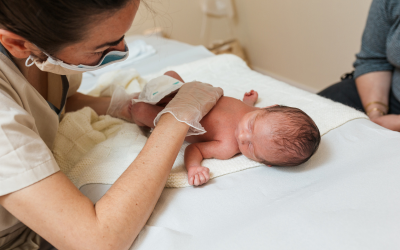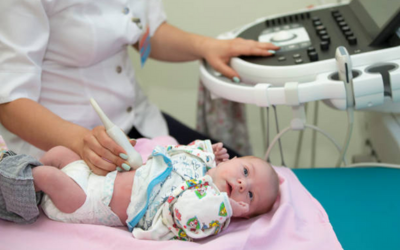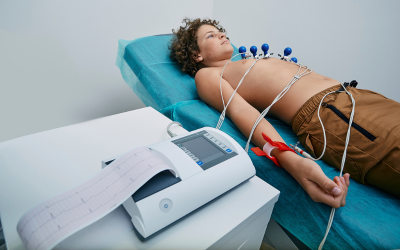
Patent Ductus Arteriosus (PDA) Management in Mumbai

When parents learn their newborn has a heart problem, the shock and fear can be overwhelming. One such condition is Patent Ductus Arteriosus (PDA), where a small blood vessel in the heart that should close soon after birth remains open. While it may seem minor, this opening can strain a baby’s heart and lungs if not treated on time.
Globally, congenital heart disease affects around 1 in every 100 live births, and PDA is among the most common forms. In India, experts estimate that over 200,000 babies are born each year with congenital heart defects, with PDA accounting for a significant proportion.
But there’s good news…
Spotting the issue early and providing the right treatment can completely change a child’s future.

Dr. Prashant Bobhate, a highly regarded Pediatric Cardiologist in Mumbai, explains:
“Parents often feel overwhelmed when their child is diagnosed with PDA. But they should know that with modern advances in treatment, most children go on to live completely normal, healthy lives. My role is not only to treat the condition but also to guide families with clarity, compassion, and reassurance every step of the way.”
Contact Us
PDA Treatment Options Offered by Dr. Prashant Bobhate

Managing PDA depends on the size of the opening, the child’s age, and their overall health. In many cases, the ductus arteriosus closes on its own in newborns, but when it does not, treatment becomes necessary.
The options include:

Medication Therapy
In premature babies, medicines such as ibuprofen or indomethacin can help close the ductus arteriosus. This option is usually considered first in neonatal PDA management.

Catheter-Based PDA Closure Procedure
A thin tube called a catheter is guided through a blood vessel to place a small device that seals the opening. This minimally invasive approach avoids the need for open-heart surgery and allows faster recovery.

PDA Closure Surgery
In certain cases where catheter-based closure is not possible, surgery may be recommended. During surgery, the PDA is tied off or closed with a clip, providing a permanent solution.

Dr. Bobhate, an accomplished expert in minimally invasive pediatric heart procedures, explains:
“Over 80% of PDA cases in children can be managed with catheter-based techniques, resulting in no large scars, a quicker recovery, and minimal hospital stay. Surgical closure is reserved for special cases, and even then, outcomes are excellent.”
Dr. Prashant Bobhate’s Diagnostic Approach to PDA
Accurate diagnosis is the cornerstone of effective treatment. Dr. Bobhate’s diagnostic process is designed to ensure no detail is overlooked:

Clinical Evaluation
Listening to the child’s heart with a stethoscope to detect murmurs and checking for symptoms such as poor weight gain or frequent respiratory infections.

Echocardiogram (Echo)
A fetal or pediatric echocardiogram provides a detailed view of the heart structures, confirming the presence and size of PDA.

Electrocardiogram (ECG) and Chest X-Ray
These help assess the impact of PDA on the heart rhythm and lung health.

Advanced Imaging
In complex cases, MRI or CT scans may be used for a comprehensive assessment.
“Every PDA case is unique. My diagnostic process focuses not just on identifying the presence of PDA but also on evaluating how it affects the heart and lungs. This allows us to create a treatment plan that is truly tailored to the child’s needs.”
Cost of Patent Ductus Arteriosus (PDA) Treatment in Mumbai
The cost of treating PDA in Mumbai varies depending on multiple factors. Key elements that influence the overall expenses include:
The treatment approach, such as medication, catheter-based closure, or surgery.
The child’s age and specific medical needs, especially for premature infants.
The type of device used for catheter-based closure and its brand.
The complexity of the surgery and the duration of hospital stay, including intensive care if needed.
Hospital facilities and support services, such as neonatal care and diagnostic requirements.
Dr. Bobhate, a trusted voice in pediatric heart care, explains:
“Parents often ask me about PDA treatment costs in Mumbai. I always remind them that while costs are a concern, selecting the appropriate treatment plan and ensuring it is carried out by an experienced team is what ultimately guarantees a child’s best health outcomes.”
Why Choose Dr. Prashant Bobhate for Patent Ductus Arteriosus (PDA) Management?
Dr. Prashant Bobhate has earned a reputation as one of the leading pediatric cardiologists in Mumbai for his expertise in neonatal interventional cardiology. Parents choose him because:
Dual Expertise
Skilled in both non-surgical and surgical PDA closure.
Compassionate Guidance
Ensures parents understand every step of the process.
Focus on Minimally Invasive Care
Strong emphasis on catheter-based solutions for quicker recovery.
Advanced Diagnostic Facilities
Tailored Treatment Plans
Strong Track Record
Holistic Care Approach
Parent-Centered Communication
Frequently Asked Questions
1. Can PDA close on its own without treatment?
2. What symptoms should parents look out for in PDA?
Children with PDA may show signs like:
· poor weight gain
· fast breathing
· fatigue during feeding
· frequent chest infections
In mild cases, the condition may be silent and only detected during routine check-ups.

